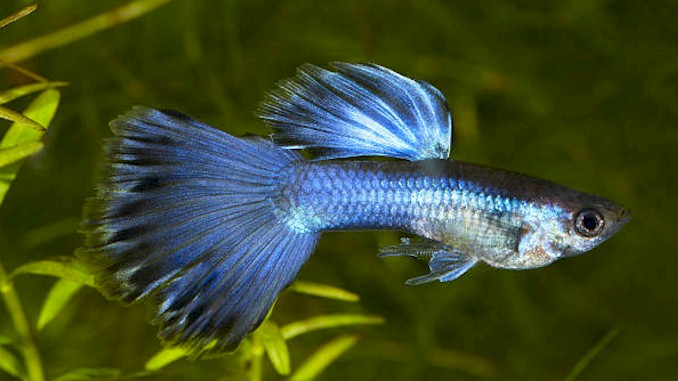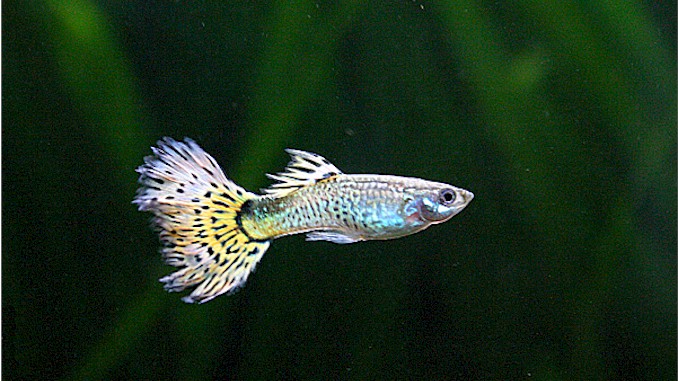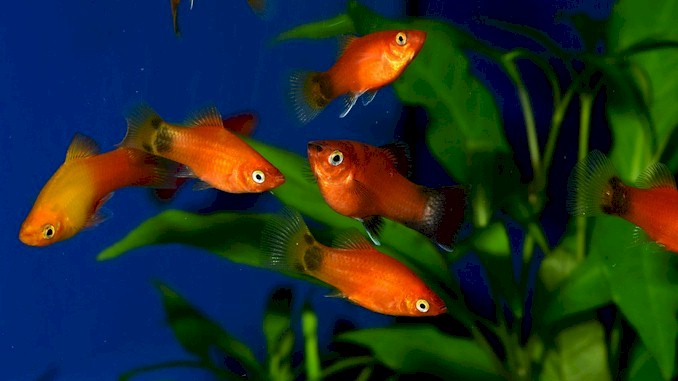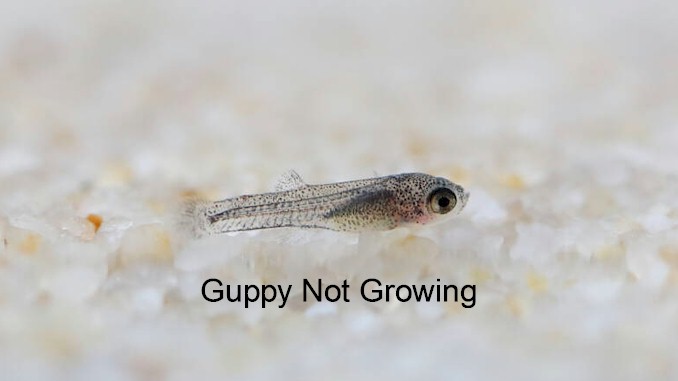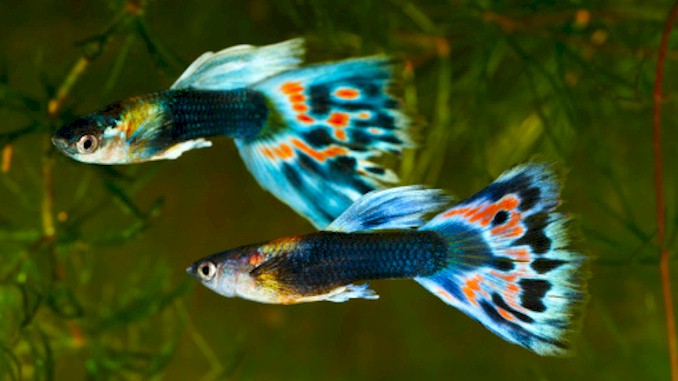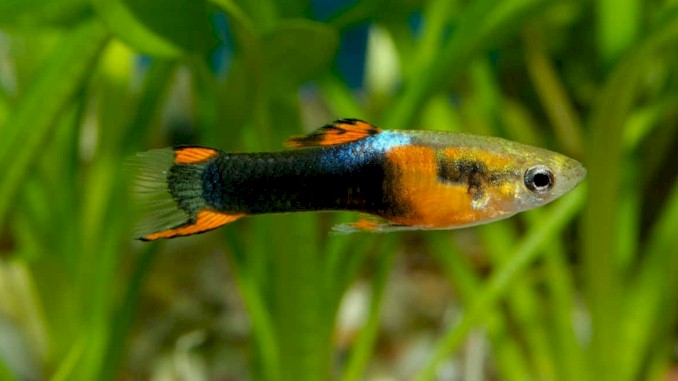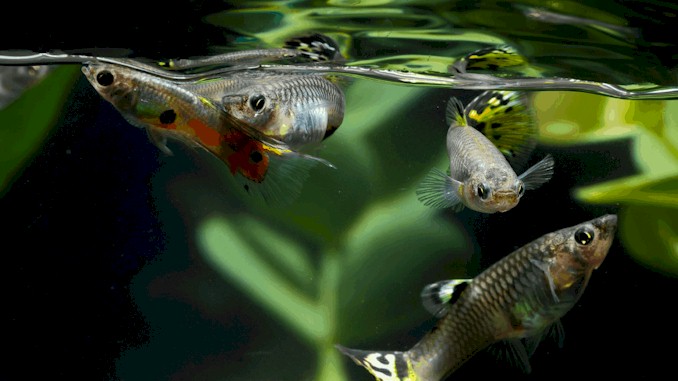How to Care For Guppies – A Complete Guide
I have been keeping guppies and lively fish for over 10 years. I know how rewarding it can be to watch them swim, play and breed in your aquarium, but I also know how challenging it can be to provide them with the best care possible. That’s why I decided to write this guide and share with you everything I have learned about guppy care over the years. Whether you are a beginner or an expert, you will find useful tips and tricks on how to keep your guppies healthy, happy and beautiful. So let’s get started!
To care for guppies, one needs to provide them with a suitable aquarium, clean water, appropriate food and proper breeding conditions. Guppies are small tropical fish that come in many colors and patterns. They are popular among aquarists because they are easy to keep and breed. However, they also require some basic care and attention to thrive and avoid diseases.
In this guide, I will go into more detail about each aspect of guppy care and give you some practical advice on how to make your guppies happy and healthy. I will also share with you some of the common problems and challenges that guppy owners face and how to overcome them. By the end of this guide, you will have a better understanding of how to care for guppies and enjoy their beauty and personality. So let’s dive in!
How to Choose the Right Aquarium for Your Guppies
One of the first things you need to consider when you want to keep guppies is choosing the right aquarium for them. The size, shape, and equipment of your aquarium will have a big impact on the health and well-being of your guppies. In this section, I will explain how to choose the best aquarium for your guppies based on their needs and preferences.
The Size and Shape of the Tank
The size of your aquarium will depend on how many guppies you want to keep and whether you plan to breed them or not. Guppies are small fish that don’t need a lot of space, but they do need enough room to swim freely and avoid overcrowding. Overcrowding can lead to stress, aggression, disease, and poor water quality.
The rule of thumb is to have 1 gallon of water for every inch of guppy fish. Male adults are about 1.4 inches long while females are about 2.4 inches. So if you want to keep a pair of guppies (one male and one female), you will need at least a 5-gallon tank. However, if you want to keep more than two guppies or if you want to breed them, you will need a bigger tank.
The recommended aquarium size for a starter pair of guppy fish is 10 gallons, which is also the same size required for raising guppy fry (baby guppies). If you can go bigger or if you’re planning on keeping more than 3-5 guppies in your aquarium, a 10-gallon starter aquarium will no longer be enough, and you’ll need to up the size of the tank.
For example, if you want to keep 10 adult guppies (5 males and 5 females), you will need at least a 20-gallon tank. If you want to breed them and raise their fry in the same tank, you will need at least a 30-gallon tank. The bigger the tank, the better for your guppies as they will have more space to swim and explore.
The shape of your aquarium is also important for your guppies. Guppies are surface dwellers that prefer shallow water with moderate flow. They like long tanks that provide more horizontal space than vertical space. Rectangular tanks are ideal for guppies as they offer more surface area than round or hexagonal tanks.
The Equipment of the Tank You Need
The equipment of your aquarium should include a filter, a heater, a lid or hood, a light source, and some decorations such as plants and rocks. A filter is essential for keeping your water clean and removing waste products from your fish. A heater is necessary for maintaining a stable temperature that suits your tropical fish (more on that later). A lid or hood is important for preventing your fish from jumping out of the tank or getting attacked by other pets such as cats or birds.
The Light Source
A light source is useful for creating a natural day-night cycle for your fish and enhancing their colors. However, make sure not to expose your fish to too much light as it can cause algae growth and stress them out. You can use an automatic timer to turn on and off your light according to a regular schedule.
Decorations
Decorations such as plants and rocks are not only aesthetically pleasing but also beneficial for your fish. They provide hiding places, breeding spots, shade areas, and natural food sources for your guppies. Live plants are especially good for guppy tanks as they help oxygenate the water, absorb excess nutrients, and create a more natural environment. However, make sure to choose plants that are compatible with your water parameters and fish behavior.
Choosing the right aquarium for your guppies is a crucial step in ensuring their happiness and health. By following these guidelines, you can create a comfortable and suitable home for your colorful and lively fish.
How to Maintain Optimal Water Quality and Temperature for Your Guppies
Another important aspect of guppy care is maintaining optimal water quality and temperature for your fish. Guppies are tropical fish that need clean and warm water to thrive. Poor water quality and temperature can cause stress, disease, and even death for your guppies. In this section, I will explain how to monitor and adjust your water parameters to suit your guppies’ needs.
Water quality refers to the chemical and biological balance of your aquarium water. It includes factors such as pH, hardness, ammonia, nitrite, nitrate, dissolved oxygen, and organic waste. These factors can affect the health and behavior of your guppies as well as the growth of plants and algae.
The ideal water parameters for guppies are:
| Parameter | Ideal Range |
|---|---|
| pH | 6.5-7.5 |
| Hardness | 8-12 dGH |
| Ammonia | 0 ppm |
| Nitrite | 0 ppm |
| Nitrate | <20 ppm |
pH
pH is a measure of how acidic or alkaline your water is. Guppies prefer slightly alkaline water with a pH of 6.5-7.5. If your pH is too low or too high, it can cause stress and damage to your fish’s skin and gills.
Hardness
Hardness is a measure of how much calcium and magnesium are dissolved in your water. Guppies prefer moderately hard water with a hardness of 8-12 dGH. Hardness affects the osmoregulation of your fish, which is their ability to maintain a balance of fluids and salts in their body.
Ammonia, Nitrite and Nitrate
Ammonia, nitrite, and nitrate are products of the nitrogen cycle in your aquarium. The nitrogen cycle is a natural process that converts organic waste (such as fish poop) into less harmful substances (such as plant food). Ammonia is produced by decomposing waste and is very toxic to fish even at low levels. Nitrite is produced by bacteria that break down ammonia and is also toxic to fish. Nitrate is produced by bacteria that break down nitrite and is less harmful than ammonia or nitrite but can still cause problems at high levels.
The ideal levels for ammonia and nitrite are 0 ppm (parts per million), which means they are undetectable in your water. The ideal level for nitrate is less than 20 ppm, which means it is low enough to not cause algae growth or stress to your fish.
Water temperature
Water temperature refers to how hot or cold your water is. Guppies are tropical fish that need warm water to thrive. The ideal water temperature for guppies is between 74°F and 82°F . If your water temperature is too low or too high, it can cause stress, disease, and even death for your guppies.
Water temperature affects the metabolism, immune system, and oxygen levels of your fish. Low water temperature can slow down your fish’s metabolism and make them more susceptible to infections and parasites. High water temperature can speed up your fish’s metabolism and make them more active but also more vulnerable to oxygen depletion and ammonia toxicity.
Maintaining optimal water quality and temperature for your guppies is essential for their happiness and health. By following these guidelines, you can create a safe and comfortable environment for your colorful and lively fish.
Cycle your guppy tank for optimal water quality
Cycling your tank is the process of establishing beneficial bacteria that help break down fish waste and other organic matter in the water. This process takes time, and it’s crucial to do it before adding any fish to your tank. To cycle your tank, you’ll need to add a source of ammonia to your tank and wait for beneficial bacteria to establish. You can add fish food or pure ammonia to your tank to start the process.
It’s recommended to cycle your tank for four to six weeks before adding any fish. You can monitor the cycling process by testing the water’s ammonia, nitrite, and nitrate levels with a test kit. Once the levels of ammonia and nitrite have dropped to zero, and nitrate levels have risen, your tank is ready for fish. It’s essential to avoid adding too many fish at once, as this can cause ammonia levels to spike and harm your fish. Start with a few guppies and gradually add more over time.
How to Feed Your Guppies a Balanced and Varied Diet
One of the most enjoyable aspects of guppy care is feeding your fish a balanced and varied diet. Guppies are omnivorous fish that will eat almost anything you offer them. However, not all foods are equally nutritious or suitable for your guppies. In this section, I will explain how to feed your guppies a diet that will keep them healthy and happy.
Flake Food
The main food source for your guppies should be flake food made for tropical fish. Flake food is easy to find, store, and use. It contains a mix of ingredients that provide your guppies with protein, carbohydrates, vitamins, minerals, and other essential nutrients.
You should feed your adult guppies a pinch of flake food once or twice a day, preferably in the morning and at night. Drop a tiny pinch of flakes into the water and watch your guppies eat. They should finish their meal in about 30-60 seconds, and certainly no longer than a few minutes. If there is any leftover food after that time, you should remove it with a net or siphon to prevent water pollution.
Flake food alone is not enough to satisfy your guppies’ dietary needs. You should also supplement their diet with other types of food occasionally. These include:
Live food
Live food is the most natural and nutritious food for your guppies. It stimulates their hunting instincts and provides them with protein and enzymes that boost their immune system and digestion. Some examples of live food are brine shrimp, bloodworms, daphnia, mosquito larvae, tubifex worms, etc.
Frozen or freeze-dried food
Frozen or freeze-dried food is a convenient alternative to live food. It has similar benefits but lasts longer and does not carry parasites or diseases. You can buy frozen or freeze-dried versions of the same live foods mentioned above.
Plants
Plants are another source of natural food for your guppies. They provide them with fiber and vitamins that help their digestion and coloration. Guppies will usually feed on algae and other plants that grow in your aquarium. You can also add some fresh or dried vegetables to their diet, such as lettuce, spinach, cucumber, zucchini, etc.
Feeding your guppies a balanced and varied diet is essential for their well-being. By following these guidelines, you can ensure that your fish get all the nutrients they need to grow and thrive.
Troubleshooting common issues in guppy tanks
While guppies are relatively easy to care for, they can still face a few health and behavioral problems. Here are some common health issues that affect guppies, how to treat them, and tips on preventing and dealing with aggression in guppy communities.
What are some common health issues that affect guppies?
Guppies are hardy and adaptable fish that can thrive in a variety of water conditions. However, they are not immune to diseases and parasites that can harm their health and well-being. In this section, we will discuss some of the most common health issues that affect guppies, how to recognize them, and how to treat them.
Parasitic infections
The most common health problems in guppies are caused by parasites. Sadly, these parasitic infections are hard to detect until serious damage takes place. Velvet disease, ich, fin and tail rot, and hexamitiasis are some of these diseases caused by parasites or fungus.
Some of the symptoms of parasitic infections include:
- White spots or gold dust-like coating on body, fins, and gills
- Scratching against objects or rubbing on substrate
- Clamped fins or loss of appetite
- Rapid breathing or gasping at surface
- Redness, inflammation, or ulceration of skin
- Fading or bleeding of colors
The main cause of parasitic infections is stress due to poor water quality, sudden temperature changes, overcrowding, or introducing new fish without quarantine. To prevent parasitic infections, you should follow similar measures as for preventing ich (see previous section), such as maintaining optimal water conditions for your guppies (pH 7-8.5, temperature 75-82°F), avoiding overstocking your tank, and quarantining new fish for at least two weeks before adding them to your main tank.
To treat parasitic infections, you should use an anti-parasitic medication such as malachite green, formalin, copper sulfate, acriflavine, or metronidazole. Follow the instructions on the label carefully and perform frequent water changes during treatment. You should also isolate infected fish from healthy ones in a separate tank until they recover.
Bacterial infections
Bacteria is the second most common cause of diseases in guppies after parasites. Most bacterial infections are opportunistic and occur when the fish’s immune system is weakened by stress or injury. Fin rot, columnaris, dropsy, popeye, tuberculosis etc., are some examples of bacterial diseases that can affect guppies.
Some of the symptoms of bacterial infections include:
- Ragged edges or holes on fins
- Cotton-like growths on mouth, fins, or body
- Bloating or swelling of abdomen
- Protruding eyes
- Curved spine or emaciation
The main cause of bacterial infections is poor water quality due to high ammonia, nitrite, or nitrate levels, low oxygen levels, or organic waste accumulation. To prevent bacterial infections, you should keep your water clean, stable, and well-oxygenated by performing regular water changes (10-20% weekly), using a good filtration system, and removing any uneaten food or dead plants from your tank.
To treat bacterial infections, you should use an antibiotic medication such as tetracycline, erythromycin, kanamycin, or furan. Follow the instructions on the label carefully and perform frequent water changes during treatment. You should also isolate infected fish from healthy ones in a separate tank until they recover.
Viral infections
Viral infections are rare but serious diseases that can affect guppies. There is no cure for viral diseases and they can spread quickly among fish populations. Lymphocystis and viral hemorrhagic septicemia (VHS) are two examples of viral diseases that can infect guppies.
Some of the symptoms of viral infections include:Some of the symptoms of viral infections include:
- Cauliflower-like growths on skin or fins
- Bleeding or hemorrhaging on body or gills
- Lethargy or loss of appetite
- Erratic swimming or darting movements
The main cause of viral infections is exposure to infected fish or contaminated water. To prevent viral infections, you should avoid buying fish from unreliable sources, quarantine new fish for at least two weeks before adding them to your main tank, and disinfect your equipment and tank regularly.
To treat viral infections, there is no effective medication available. The best you can do is to isolate infected fish from healthy ones in a separate tank and provide them with optimal water conditions and supportive care. You may also have to euthanize severely affected fish to prevent further suffering and transmission.
These are some of the most common health issues that affect guppies. By identifying them early and treating them promptly, you can save your guppies from suffering and death. Remember to always keep your water clean, stable, and well-oxygenated, and to quarantine new fish before adding them to your main tank. This way, you can prevent most of these health issues from occurring in the first place.
How to Identify and Treat Common Guppy Diseases and Parasites
Now, let’s talk about the problems you may encounter as a guppies owner. While you have some preparation for possible challenges you will face, you will feel more relieved.
Guppies are colorful and lively fish that can brighten up any aquarium. However, they are also prone to various diseases and parasites that can affect their health and appearance. In this section, we will discuss some of the most common guppy diseases and parasites, how to identify them, and how to treat them.
Ichthyophthirius multifiliis (Ich or White Spot Disease)
Ich is a parasitic infection caused by a protozoan that attaches itself to the guppy’s skin, fins, and gills. It causes small white spots or cysts on the fish’s body that look like grains of salt. Ich can be very contagious and fatal if left untreated.
Some of the symptoms of ich include:
- White spots on the body, fins, and gills
- Scratching against objects or rubbing on the substrate
- Clamped fins or loss of appetite
- Rapid breathing or gasping at the surface
The main cause of ich is stress due to poor water quality, sudden temperature changes, overcrowding, or introducing new fish without quarantine. To prevent ich, you should maintain optimal water conditions for your guppies (pH 7-8.5, temperature 75-82°F), avoid overstocking your tank, and quarantine new fish for at least two weeks before adding them to your main tank.
To treat ich, you should raise the water temperature gradually to 86°F for at least 10 days. This will speed up the life cycle of the parasite and make it more vulnerable to medication. You should also add aquarium salt (1 teaspoon per gallon) or use an anti-parasitic medication such as malachite green or formalin. Follow the instructions on the label carefully and perform frequent water changes during treatment.
Tetrahymena (Guppy Disease)
Tetrahymena is another parasitic infection caused by a ciliate protozoan that invades the guppy’s internal organs such as kidneys, liver, spleen, intestines etc. It causes severe damage to these organs leading to hemorrhage, necrosis (tissue death), inflammation etc. Tetrahymena can be fatal within days or weeks if not treated.
Some of the symptoms of tetrahymena include:
- Darkening of body color
- Bloated abdomen
- Red spots on skin
- Loss of scales
- Hemorrhage from anus
- Lethargy or erratic swimming
The main cause of tetrahymena is stress due to poor water quality, overcrowding, or introducing new fish without quarantine. To prevent tetrahymena, you should follow similar measures as for preventing ich, such as maintaining optimal water conditions for your guppies, avoiding overstocking your tank, and quarantining new fish for at least two weeks before adding them to your main tank.
To treat tetrahymena, you should use an anti-parasitic medication such as metronidazole. Follow the instructions on the label carefully and perform frequent water changes during treatment. You should also isolate infected fish from healthy ones in a separate tank until they recover.
Piscinoodinium pillulare (Velvet or Gold Dust Disease)
Velvet is a parasitic infection caused by a dinoflagellate that attaches itself to the guppy’s skin, fins, and gills. It causes a fine gold dust-like coating on the fish’s body that reflects light. Velvet can be very contagious and fatal if left untreated.
Some of the symptoms of velvet include:
- Gold dust-like coating on body, fins, and gills
- Scratching against objects or rubbing on substrate
- Clamped fins or loss of appetite
- Rapid breathing or gasping at surface
The main cause of velvet is stress due to poor water quality, sudden temperature changes, overcrowding, or introducing new fish without quarantine. To prevent velvet, you should follow similar measures as for preventing ich, such as maintaining optimal water conditions for your guppies, avoiding overstocking your tank, and quarantining new fish for at least two weeks before adding them to your main tank.
To treat velvet, you should raise the water temperature gradually to 86°F for at least 10 days. This will speed up the life cycle of parasite and make it more vulnerable to medication. You should also add aquarium salt (1 teaspoon per gallon) or use an anti-parasitic medication such as copper sulfate or acriflavine. Follow the instructions on the label carefully and perform frequent water changes during treatment.
These are some of the most common guppy diseases and parasites that you should be aware of. By identifying them early and treating them promptly, you can save your guppies from suffering and death. Remember to always keep your water clean, stable, and well-oxygenated, and to quarantine new fish before adding them to your main tank. This way, you can prevent most of these diseases and parasites from occurring in the first place.
How to prevent and deal with aggression in guppy communities
Guppies are generally peaceful and social fish that can coexist with other guppies and compatible tank mates. However, sometimes they can display signs of aggression towards each other or other fish. This can cause stress, injury, or even death to the victims of aggression. In this section, we will discuss why guppies can become aggressive, how to recognize aggression, and how to prevent and deal with it.
Why do guppies become aggressive?
Guppies are not naturally aggressive, but they can develop aggressive behavior due to various factors such as:
Sex ratio
Male guppies tend to be more colorful and active than female guppies. They also have a strong mating drive and will chase female guppies relentlessly. If there are too few female guppies in the tank, male guppies may compete for them aggressively or harass them excessively. This can stress out both male and female guppies and lead to aggression.
Tank size
Guppies need enough space to swim freely and explore their environment. If the tank is too small for the number of guppies, they may feel cramped and stressed. This can trigger territorial behavior or competition for resources such as food or hiding spots.
Tank mates
Guppies are usually friendly towards other fish that are similar in size and temperament. However, some fish may not be suitable for guppy communities because they are too aggressive, predatory, or fin-nipping. These fish may attack, chase, or nip at guppies, causing them stress, injury, or death. Some examples of fish that should not be kept with guppies are cichlids, barbs, tetras, and bettas.
On the other hand, some guppies may also bully other fish that are smaller, weaker, or slower than them. This can happen especially if the other fish are new additions to the tank.
Water quality
Guppies need clean, stable, and well-oxygenated water to stay healthy and happy. If the water quality is poor due to high ammonia, nitrite, nitrate, or chlorine levels; low pH; or temperature fluctuations; guppies may become stressed and prone to diseases.
Stress can lower their immune system and make them more aggressive towards each other or other fish.
Food availability
Guppies are omnivorous fish that need a varied diet of high-quality flakes, pellets, frozen foods (such as brine shrimp or bloodworms), and live foods (such as daphnia or mosquito larvae).
If there is not enough food for all the guppies in the tank; if some guppies hog all the food; or if some foods cause digestive problems; guppies may become hungry, malnourished, or sick.
This can lead to competition for food or aggression towards weaker or slower feeders.
How to recognize aggression in guppy communities?
Some of the signs of aggression in guppy communities include:
- Chasing: One of the most common signs of aggression is when one guppy is constantly chasing another5. This is because they’re trying to assert their dominance by scaring them and attacking them. While it occurs more in males, it doesn’t mean females won’t do it either (you’ll find out more about this later).
- Nipping: Another sign of aggression is when one guppy nips at another’s fins, body, or eyes. This can cause damage to the victim’s appearance, health, or vision. Nipping can also be a sign of boredom, curiosity, or hunger.
- Fighting: Sometimes, guppies may engage in physical fights with each other, especially males. They may lock their mouths and push each other around, or bite and tear at each other’s flesh. Fighting can result in serious injuries or death to both parties.
- Hiding: If a guppy is being bullied by another guppy or other fish, it may hide in a corner, behind plants, or under decorations. It may also avoid swimming in the open or near the aggressor. Hiding can indicate fear, stress, or injury.
- Stress: Aggression can cause stress to both the aggressor and the victim. Stress can manifest in various ways such as loss of appetite, loss of color, clamped fins, rapid breathing, darting movements, disease susceptibility etc .
How to prevent and deal with aggression in guppy communities?
Aggression in guppy communities can be prevented and dealt with by following these tips:
- Maintain a proper sex ratio: The ideal sex ratio for guppies is one male for every two or three females . This way, the males will have enough females to mate with, and the females will not be harassed too much. If you have more males than females, you should either add more females, remove some males, or separate them into different tanks.
- Provide enough space: Guppies need at least one gallon of water per fish to swim comfortably and peacefully. If your tank is too small for your guppy population, you should either upgrade to a larger tank, remove some guppies, or divide them into smaller groups. You should also provide plenty of hiding spots such as plants, rocks, caves, or driftwood for your guppies to retreat to if they feel threatened or stressed.
- Choose compatible tank mates: Guppies are best kept with other peaceful and similar-sized fish that will not harm them or compete with them for food or space . Some examples of good tank mates for guppies are mollies, platies, swordtails, rasboras, danios etc. You should avoid keeping guppies with aggressive, predatory, or fin-nipping fish such as cichlids, barbs, tetras etc. You should also quarantine new fish for at least two weeks before adding them to your main tank to prevent introducing diseases or parasites that could stress out your guppies.
- Keep your water clean: Guppies need clean water to stay healthy and happy. You should perform regular water changes (10-20% weekly), use a good filtration system (preferably biological), and test your water parameters (ammonia, nitrite, nitrate, pH, temperature) regularly using a reliable test kit. You should also avoid overfeeding your guppies, as this can cause excess waste and pollution in your tank.
- Feed your guppies well: Guppies need a varied and balanced diet to stay healthy and happy. You should feed them high-quality flakes, pellets, frozen foods, and live foods that are suitable for their size and nutritional needs. You should also feed them twice a day, only as much as they can eat in 2-3 minutes, and remove any uneaten food from the tank. This way, you can prevent hunger, malnutrition, or overfeeding that could lead to aggression or disease.
- Isolate aggressive guppies: If you notice that one of your guppies is bullying other fish or causing trouble in your tank, you should isolate it in a separate tank or bucket for a few hours or days. This can help to calm it down and disorient it from its dominant position. When you return it to the main tank, it may be less likely to resume its aggressive behavior. However, this method may not work for all guppies, and some may need permanent separation or rehoming.
These are some of the ways to prevent and deal with aggression in guppy communities. By following these tips, you can ensure that your guppies live peacefully and happily with each other and other fish.
Related Questions:
How many guppies should be kept together?
The number of guppies that can be kept together depends on the size of the aquarium and the water parameters. A general rule of thumb is to have at least 2 gallons (7.5 liters) of water per guppy. For example, if you have a 10-gallon (38-liter) aquarium, you can keep 5 guppies.
It’s also important to consider the male-to-female ratio. It’s best to have more females than males, ideally with a ratio of 2-3 females per male, to prevent the males from harassing the females.
Keep in mind that guppies are social fish and should not be kept alone. It’s recommended to keep at least 3-5 guppies together to provide a comfortable and stimulating environment for them.
Are guppy fish easy to care for?
Yes, guppy fish are generally considered to be easy to care for, especially for beginners. They are hardy and adaptable fish that can tolerate a range of water conditions and can thrive in a variety of aquarium setups. You can refer to the previous section of the topic to get some general tips for caring for guppy fish.
How do you take care of a guppy for beginners?
Guppies are easy to care for even by beginner fish keepers. They are adaptable fish that can cope with a variety of environmental variations. However, they still require proper care and conditions to thrive. Some basic aspects of guppy care are:
- Set up the tank with a water filter, an air pump, and a heater.
- Feed them a balanced diet of flakes, pellets, live or frozen foods.
- Watch for signs of sickness and quarantine them if needed.
- Control their breeding by keeping more females than males or separating them.

